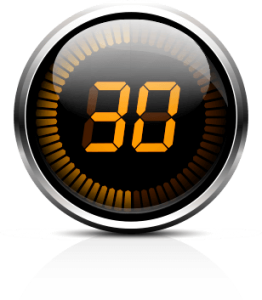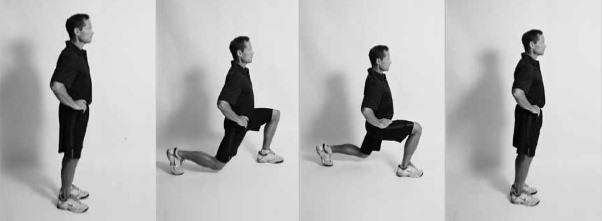
It may seem almost counterintuitive, but the best way to boost your energy levels is by doing short bursts of intense exercise.
If you’re a regular reader, you’ll know this is the driving force behind my PACE (Progressively Accelerating Cardiopulmonary Exercise) program.
Without question, short bursts of intense exercise are the fastest way to spark your mitochondria, the tiny “power plants” inside each of your cells.
Mitochondria generate all of the energy you use to get through your day. And if you have a lot of them in each cell, and they’re all running at full speed, you feel like you can do anything… just like you did in your youth.
That’s why we’re most energetic as children — when we have the highest number of healthy mitochondria.
But your mitochondria decay as you age. They become weaker and die off.
Nutrients like CoQ10 can help your surviving mitochondria make more energy. But to regain the lost energy of your youth you need to produce new ones.
The research I’ve done with my own patients over the years has revealed that the most effective way of doing this is with brief bursts of vigorous exercise. PACE can actually increase the number of mitochondria in your cells.
The process is called “mitochondrial biogenesis,” and it’s a huge deal in anti-aging medicine because it gives us the power to halt and reverse cell death and degeneration.
By doing this you can control the biological age of your body. And you can prevent a host of age-related diseases, including Alzheimer’s, Parkinson’s, coronary artery disease, diabetes, and cancer.
Today, I’m going to share with you an exciting new study that confirms the results of my research and shows us the beneficial cellular changes that happen when you do brief, intense exercise.
I’ll also show
you an exercise you can do in the comfort of your own home that will start boosting your production of mitochondria right away.
30 Seconds Is All It Takes
Researchers at the Karolinska Institute in Sweden recently investigated what happens in muscle cells during bouts of short, high-intensity exercise.
They had subjects perform 30 seconds of maximum exertion cycling followed by a brief period of rest. The subjects repeated this six times and then had their muscle tissue examined for the effects.
The results were astounding…
A mere six short bursts of exercise followed by rest were enough to trigger a noticeable generation of healthy new mitochondria in all of the subjects.
And the study also revealed the why…
Biochemical analysis showed that short, intense bouts of exercise break down calcium channels in your muscle cells and signals those cells to increase the production of new mitochondria to improve muscular endurance.
The key to staying young is creating MORE mitochondria that are healthy enough to produce this energy and endurance.
And that’s exactly what this type of exercise makes your body do… all in just a few minutes per day.
Start Producing New Cell Batteries Today
That’s why PACE is one of the most powerful and effective anti-aging strategies I know.
I’ve been using this program to tap into the energy of my youth for years. And today you can get started with a simple PACE exercise, known as alternating lunges.
- With your hands at your hips, take a step forward with your right leg until your front knee is bent 90 degrees and your back knee almost touches the ground.
- Push off from your leading foot and return to starting position.
- Repeat with your left leg. Continue until you feel winded.
- Rest, recover and do two more sets.

Start at a speed and level of intensity you’re comfortable with.
From there, be sure to progressively increase the intensity over time.
This progression is what signals your cells to increase the production of new mitochondria to improve your muscular endurance. And the more new mitochondria you have, the younger you’ll look and feel.
To Your Good Health,

Al Sears, MD, CNS
iBoveris A, Navarro A. Brain mitochondrial dysfunction in aging. IUBMB Life. 2008 May;60(5):308-14
iiAmes BN, Liu J. Delaying the mitochondrial decay of aging with acetylcarnitine. Ann N Y Acad Sci. 2004 Nov;1033:108-16.
iiiMichelle L. Boland,1,2 Aparajita H. Chourasia,1,3 and Kay F. Macleod1,2,3, Mitochondrial Dysfunction in Cancer. Front Oncol. 2013; 3: 292. Published online 2013 Dec 2. doi: 10.3389/fonc.2013.00292
ivLarsen FJ1, Schiffer TA2, Ørtenblad N2, Zinner C2, Morales-Alamo D2, Willis SJ2, Calbet JA2, Holmberg HC2, Boushel R2. High-intensity sprint training inhibits mitochondrial respiration through aconitase inactivation. FASEB J. 2015 Oct 9. pii: fj.15-276857.

